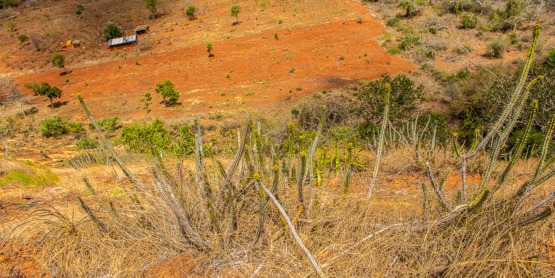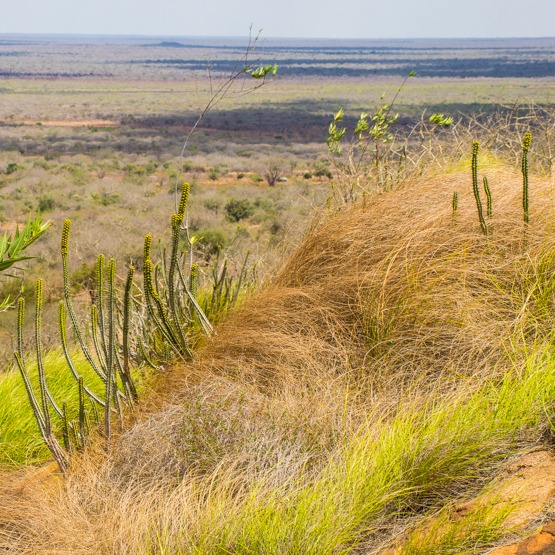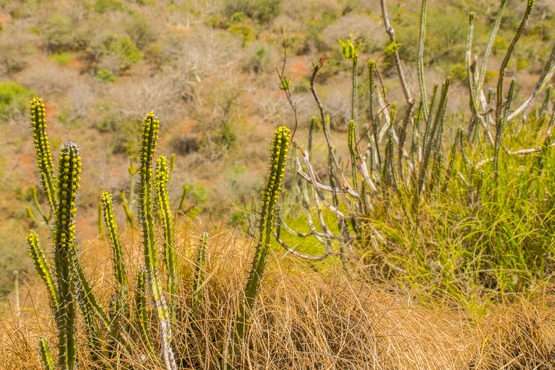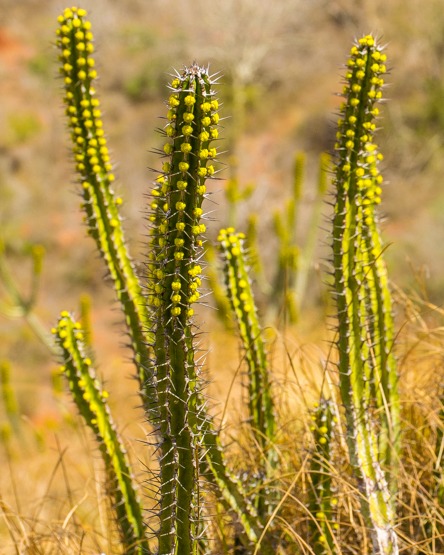This species was discovered in 1960 on the lower slopes (700–1200 m.) of Mt. Kasigau in southern Kenya, where it grows on exposed rock faces. It has not been recorded from other places since then.
Although at first sight it reminds one of a multi-angled E. heterochroma, it has some distinguishing features: usually not higher than 1 m, branches always rigid and uniform sap-green.
The plants do very well in cultivation and can easily be propagated from cuttings.
It is a shrub with more or less erect branches which are sparsely rebranched, prominently 6–9-angled, 1–3 cm. thick and bright green; the angles are shallowly toothed, with teeth 6–12 mm. apart.
The grey spines are to 8 mm. long; without or with rudimentary prickles
Cyathia are ± 3 × 4 mm., with cup-shaped involucres; the golden yellow glands are transversely oblong, ± 1 × 2 mm. and the lobes are subcircular, ± 1.3 × 1.3 mm.
The capsules are obtusely 3-lobed and exserted on a reflexed pedicel to 4 mm. long.






Thanks for the clarification, Frans.
Is this species related to E. baioensis. Similar appearance.
According to the Ilustrated Handbook of Succulent Plants they both belong to the same group (Group 1). As this group contains nearly 300 species and baioensis and classenii are in different subgroups it does not sound as if they are nearly related. Furthermore they both only occur on isolated mountains in totally different parts of Kenya.